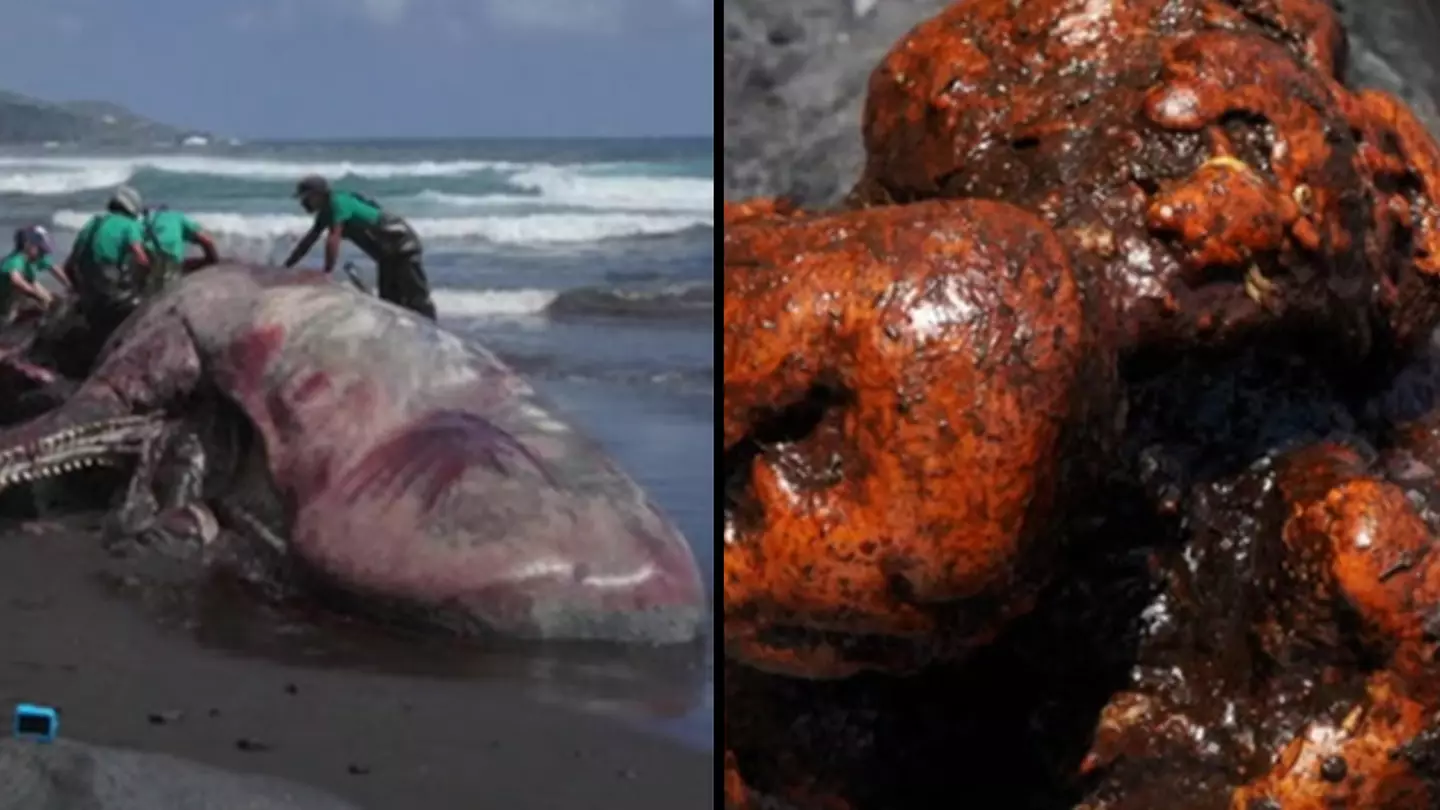They found so much gold inside this dead whale!
Watch Our Video Of The Week
Who would have guessed that a dead whale that washed up on the shore of the Canary Island of La Palma would have a sizeable sum stashed away in its internal organs?
As they say, one man’s trash is another man’s treasure, but in this case, it’s a fortune as experts discovered “floating gold” inside the massive corpse, valued at an astounding £425,000.
Even though it was a bit more strenuous post-mortem, it is obvious that the effort paid off given how much value was stashed away in the whale, despite its somewhat peculiar placement.
Antonio Fernández Rodrguez, director of the University of Las Palmas’ institute of animal health and food security, was eager to ascertain the reason for the sperm whale’s demise.
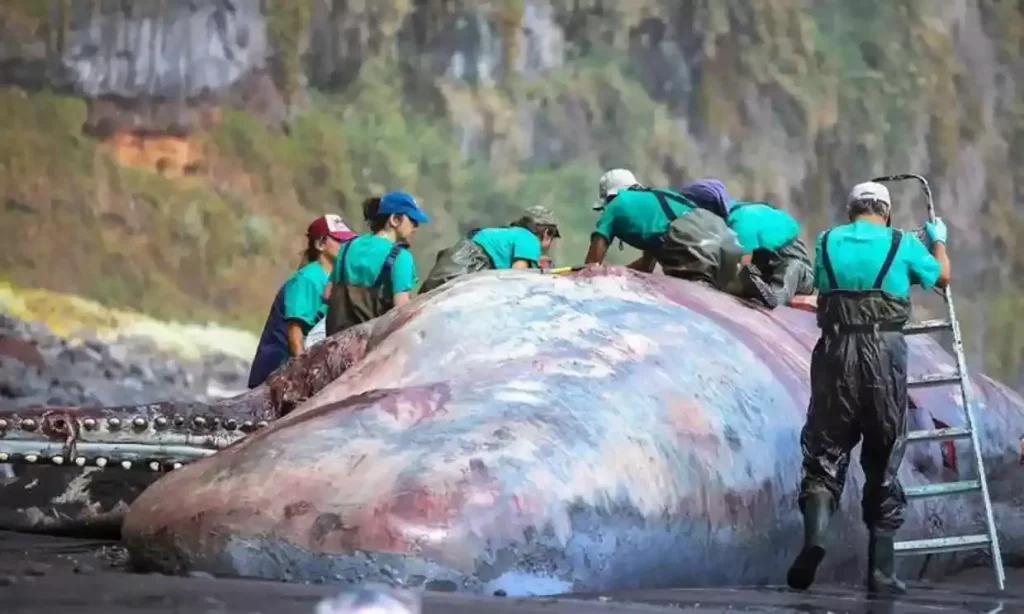
Rodrguez quickly solved the puzzle of how the 13-meter-long whale washed up on Nogales beach last month, which had initially baffled investigators.
The specialist examined the mammal’s colon more closely since he thought there might be a problem with its digestion.
To his amazement, Rodrguez also discovered a fairly substantial object adhered to a section of the whale’s intestines.
A few graphic mental images there – I know.
“What I took out was a stone about 50-60cm in diameter weighing 9.5kg,” he said.
“When I dissected and removed the stone I turned around and everyone on the beach looked at me in surprise, but for me at that moment I understood where the origin of the infection was coming from.”
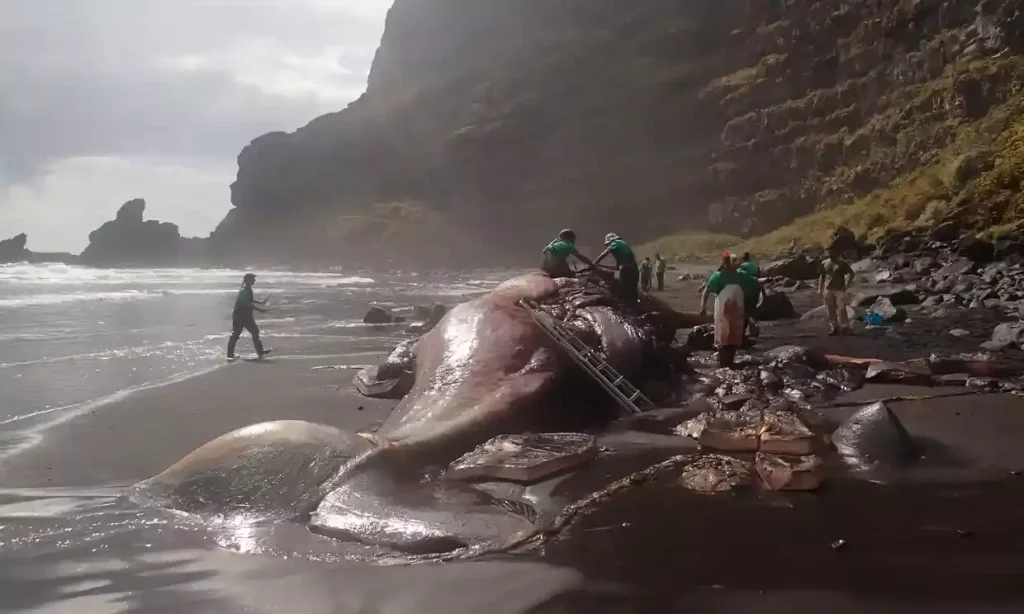
Rodríguez continued: “The waves were washing over the whale.
“Everyone was watching when I returned to the beach but they didn’t know that what I had in my hands was ambergris.”
He explained that if you don’t already know, ambergris is a very precious ingredient that is so uncommon that it is frequently referred to as “floating gold” given that it has been used for centuries by perfumers all over the world.
The 9.5 kg lump Rodrguez had uncovered was valued at nearly €500,000 (about £425,000), making it somewhat of a cherished asset for people in the perfume industry.
Not bad at all, especially after exploring the whale’s colon in detail.
Now for the solution to the question that has been on everyone’s mind: what on earth does ambergris smell like?

Unbelievably, the liquid has a woodsy aroma and is made from the accumulated remnants of undigested squid and cuttlefish that have been vomited out.
Think sandalwood – but from the sea.
The whale eventually died from sepsis brought on by the ambergris, the researcher discovered.
The institute is currently trying to find a buyer for the “floating gold” in the hopes that the money will be utilised to aid those who were affected by the La Palma volcano eruption in 2021, which resulted in damage totaling over €800 million (about £685 million).
“The law is different in every country,” Rodríguez said. “In our case, I hope the money will go to the island of La Palma, where the whale ran aground and died.”
Mysterious Humpback Whale Found In the Amazon Jungle
‘Real Life Cast Away’ Man And His Dog Rescued After Being Lost At Sea For Three Months
This really is an incredible story!
Typically, the phrase “every man and his dog” would imply a sizable crowd. But in the case of this man and his dog, they were the only people present.
Recently, Tim Shaddock and his canine companion were saved in a true-life edition of Cast Away.
In the Tom Hanks-starring survival movie from 2000, Chuck Noland, the main character, survives a plane disaster and winds up stuck on an island for four years by himself.
And in this real-life scenario from 2023, sailor haddock left La Paz, Mexico, for French Polynesia back in April.
However, in just a few weeks, his catamaran suffered damage to the electronics due to extremely violent weather.
Shaddock and his dog Bella were left alone and defenceless after all communication on the boat was lost.

They did, however, act like true heroes by surviving on raw fish and rainfall while trapped in the middle of the Pacific Ocean.
It is believed that the Australian used the boat’s cover to prevent serious sunburn.
Shaddock was located after being lost for around three months—thankfully speedier than Chuck Noland’s fictitious circumstance.
A tuna trawler and its chopper in the ocean noticed Bella and the Australian sailor.
Shaddock and the pup have escaped serious illnesses or injuries, despite having a somewhat rough, grown-out beard and a slim build.
He told the crew that all he had when he was discovered by the boat was “just fishing gear and survival gear.”

Joined by a waggy-tailed Bella, Shaddock told Australia’s 9News: “I have been through a very difficult ordeal at sea.
“I’m just needing rest and good food because I have been alone at sea a long time. Otherwise, I’m in very good health.
“I have very good medicine and I’m being looked after very well.”
The tuna trawler transported Shaddock and Bella back to Mexico so they can receive more medical care there.
The Robertson family became trapped at sea in the 1970s for about 40 days.
Lyn and Dougal, who operate a dairy farm in Staffordshire, sold their land in order to purchase a 50-year-old yacht and embark on a voyage around the world. Along with them were their 18-year-old daughter Anne, 16-year-old son Douglas, and twin boys Neil and Sandy, who were 9 years old at the time.
Disaster happened after more than a year and a half when the boat sank following a killer whale attack. Thankfully, the family climbed into their fibreglass dinghy and inflatable life raft. They only had enough food rations for three days and 10 days’ worth of water, yet they managed to survive.
After 38 days of consuming fish and drinking turtle blood, they were eventually saved by a Japanese fishing boat.
The Story Behind The Hills Have Eyes Movie
Repeated Signals From Middle Of The Milky Way Could Be Aliens Saying Hello
Aliens are trying to contact us!
According to a recent study, the repeated signal we are receiving from the Milky Way galaxy’s centre may indicate that extraterrestrial life is attempting to get in touch with us.
When we occasionally detect signals coming from the furthest reaches of space, it’s intriguing to speculate about their origin. In fact, the possibility that they are extraterrestrial is intriguing.
However, rather than little green men trying to call us, when we frequently detect radio waves, it’s usually something like a pulsar.
A recent study is attempting to determine whether any of the signals we are picking up are indeed something else by utilising software designed to recognise repetitive patterns of radio waves from space.
They are particularly interested in learning whether signals coming from the Milky Way, the galactic centre, could be from an alien civilization looking for sentient life similar to our own.

Our ability to process all of the signals reaching the Earth has significantly improved thanks to the researchers’ software, which can process 1.5 million samples of data in 30 minutes.
Akshay Suresh, a graduate student at Cornell University, is the project’s principal investigator. Its working title is the Breakthrough Listen Investigation for Periodic Spectral Signals (BLIPSS).
According to study co-author Steve Croft, repeating patterns and small bandwidths are what they are truly searching for because natural occurrences are not likely to give such a signal.
He said: “Breakthrough Listen captures huge volumes of data, and Akshay’s technique provides a new method to help us search that haystack for needles that could provide tantalizing evidence of advanced extraterrestrial life form.”
Even though the specialists initially failed to detect the telltale signals of extraterrestrial life, they will continue to search for that elusive indication that the truth may indeed exist.

A message from Mars was recently transmitted, and individuals were challenged to decipher what it said, simulating the experience of receiving an alien communication.
We are a fairly noisy planet with our own network of satellites and transmissions even though we are receiving up signals from the far reaches of space.
It’s not unlikely that an alien organism may be able to pick up our transmissions and be trying to decipher them someplace in the stars.
Let’s just hope we aren’t annoying any space beings too much with our mixed signals.
Aldi Shoppers Give Warning To Anyone Who Uses The Self-Checkout
Explorer Claimed He Found Evidence Of ‘Extra-Terrestrial Spaceship’ Beneath Bermuda Triangle
Under the Bermuda Triangle, a treasure hunter made a ‘unexplained’ find, which, in his opinion, may show that aliens once visited Earth hundreds of years ago.
It seems a little impolite of them to drop by, go, and never return.
Gordon Cooper, a NASA astronaut and a personal friend of Darrell Miklos, assisted him in his search for shipwrecks in the Caribbean in 2018. However, in 2018, the crew discovered something that shocked Miklos.
Miklos dived at a secret spot in the Bahamas to look into what he believed might be an old shipwreck using charts that Cooper put together in the 1960s to locate more than 100 magnetic “anomalies” in the Caribbean.
Related Article: St Louis Aquarium Holds 1.3 Million Gallons Of Water For Endless Water Fun
Miklos detailed what he discovered while filming an episode of Cooper’s Treasure on the Discovery Channel to the MailOnline at the time, saying his team was hoping to bring the “alien spaceship” to the surface.

He recalled: “We were doing a scene where I was sitting in a two man submersible. We were out in the Bahamas and we were on an English shipwreck trail, somehow related to Sir Francis Drake.
“I was trying to identify shipwreck material based on one of the anomaly readings on Gordon’s charts when I noticed something that stuck out, that shocked me. It was a formation unlike anything I’ve ever seen related to shipwreck material, it was too big for that.”
Well, it would be, wouldn’t it?

“It was also something that was completely different from anything that I’ve seen that was made by nature.
“It’s almost like there are five arms coming out of a steep wall cliff and each one of these is the size of a gun on a battleship. They’re enormous and then there’s five over here and five over there, 15 in total.
Related Article: Locals believe ‘world’s creepiest waterpark’ was abandoned because of grim urban legend
“There’s identical formations in three different areas and they don’t look nature made, they don’t look man made, certainly nothing I’ve ever seen based on my experience and I have years of experience at doing this, we’ve identified multiple different types of shipwreck material, this doesn’t match or look anything like that.”

Around the primary object, the explorer discovered further strange and mysterious formations that are all coated in thick coral that he estimates to be hundreds or perhaps thousands of years old.
Miklos proceeded to delve deeper into Cooper’s files to look for other hints after being completely astounded by the revelation.
He continued: “I investigated some of Gordon’s charts, I realised that there was something else on there that Gordon was referring to.
Related Article: Worlds First Underwater Hotel Opens In The Maldives
“Then it made sense to me why it wasn’t identified as a shipwreck… he had to mean it might be something from another world. Gordon believed in aliens.
“He believed that we had visitors from other planets and he also believed that a lot of these things landed in this particular part of the world.”
Volunteer in largest hunt for Loch Ness Monster in 50 years reveals there were ‘sightings’
Watch our Video Of The Week
There were ‘sightings’ on Saturday, August 26, according to a volunteer who is a member of the greatest Loch Ness Monster hunt in 50 years.
There is little doubt that the Loch Ness Monster enigma has persisted for a long time, and recent searches have scarcely turned up any conclusive solutions.
Nevertheless, thousands make an effort each year to uncover proof that the monster actually exists.
Hundreds of volunteers began arriving in the Scottish Highlands in quest of the fabled creature.
The Loch Ness Centre at Drumnadrochit has partnered with a group of researchers from Loch Ness Exploration (LNE) to carry out the largest surface water study for the creature in more than 50 years during a two-day search operation.
Related Article: Mysterious Humpback Whale Found In the Amazon Jungle
Since the Loch Ness Investigation Bureau began looking for evidence of the monster back in 1972—roughly 51 years ago—it is believed to be the most thorough study.
A team of volunteers has been searching for Nessie with the aid of unique tools that have never been used on the loch.
Drones are also being used to create thermal imagery of the notorious waters in an effort to find any weird anomalies that may be hiding deep beneath the surface.
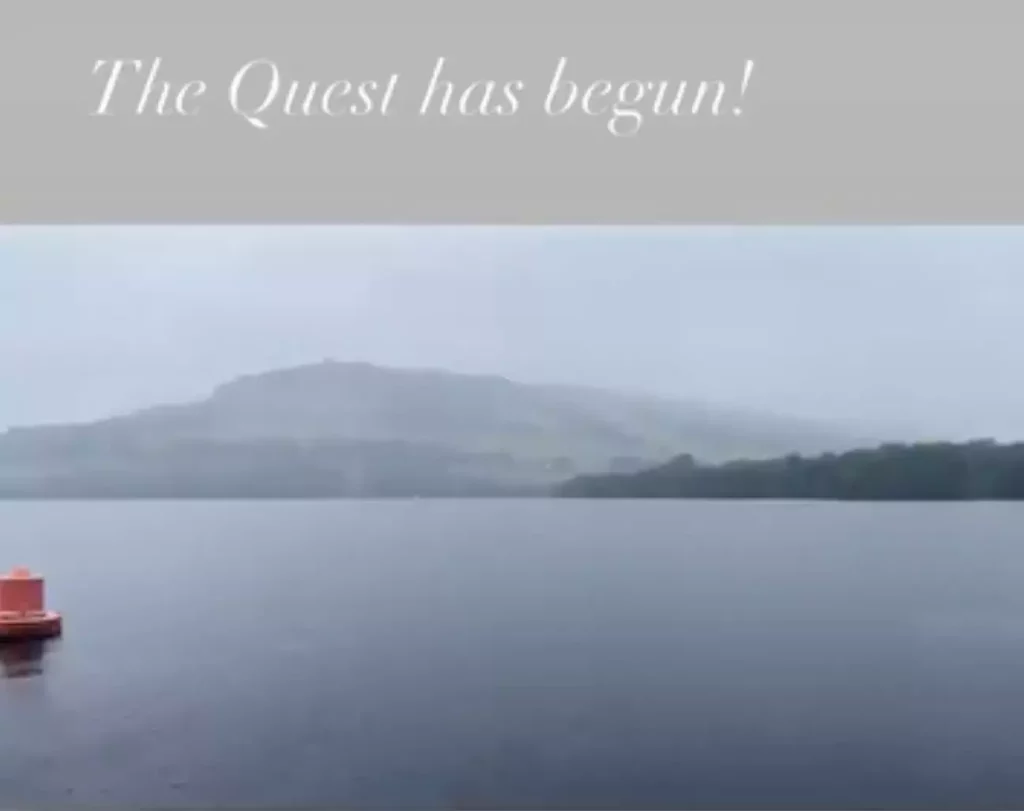
It marks the start of day two of the search for Loch Ness, but a volunteer on the expedition has already recounted events that occurred on the Saturday.
One of the hundreds of volunteers participating that weekend, Craig Gallifrey, told Sky News that there had been some “sightings” the day before.
After being asked by Sky News if he thinks the search will provide any sightings, Gallifrey said: “It’s hard to say, it would be nice to find something new that might be in the Loch, but with the results on Friday with the four unidentified sounds it’s something we going to explore at lot more today (Sunday).
Related Article: Stabilised Footage Of Unidentified Subject Filmmakers Believe To Be Bigfoot
He added: “There were some sightings yesterday which are all being collated so hopefully we will have something by the end of the weekend.”
Adding to that, the volunteer said: “There were some reports from people that were watching on webcams and doing the surface watch, so we are just collecting all that evidence.”
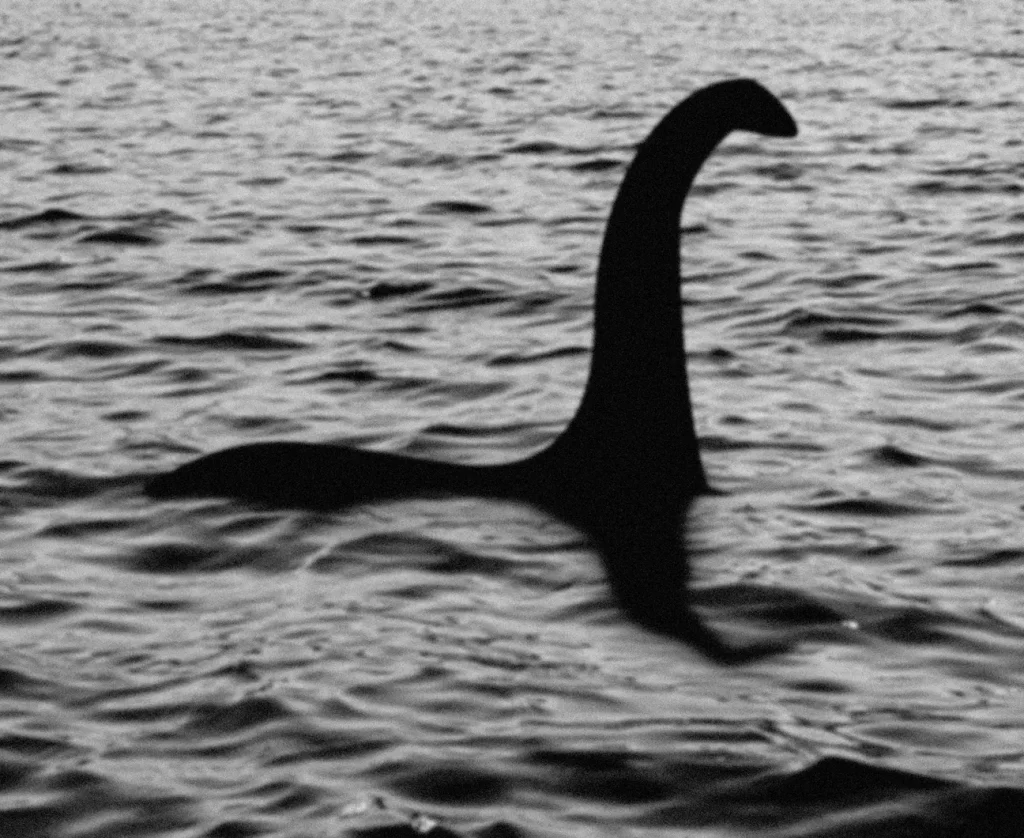
Speaking ahead of the search, Alan McKenna from LNE said the hope for the search was to find evidence of Nessie’s existence.
“Since starting LNE, it’s always been our goal to record, study and analyse all manner of natural behaviour and phenomena that may be more challenging to explain,” he said.
Related Article: The World’s Most Dangerous Disease ‘Laughing Death’ Kills 100% Of People
“It’s our hope to inspire a new generation of Loch Ness enthusiasts and by joining this large-scale surface watch, you’ll have a real opportunity to personally contribute towards this fascinating mystery that has captivated so many people from around the world.”

